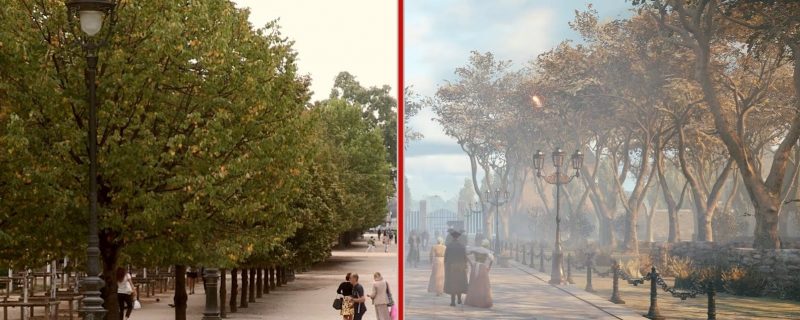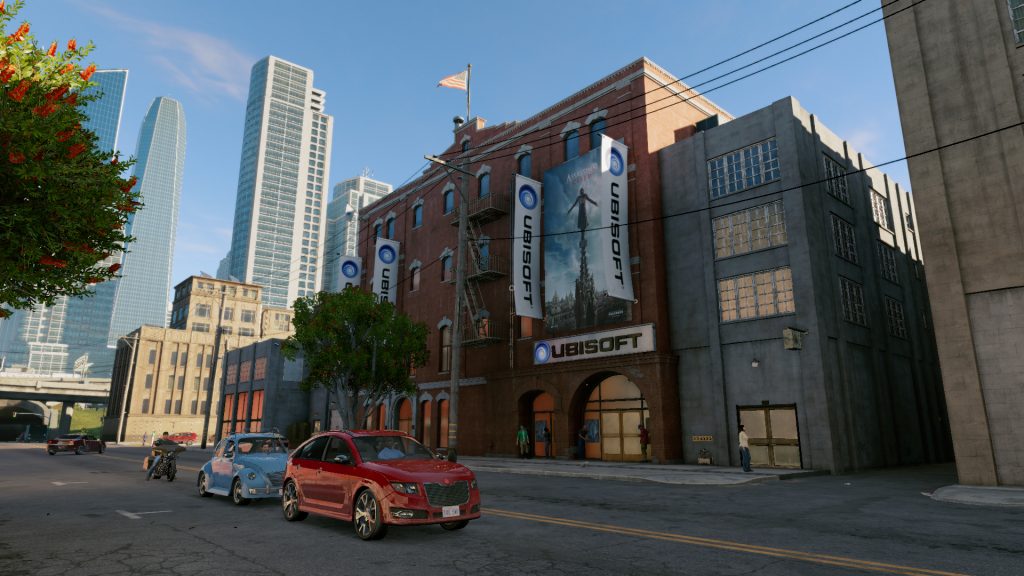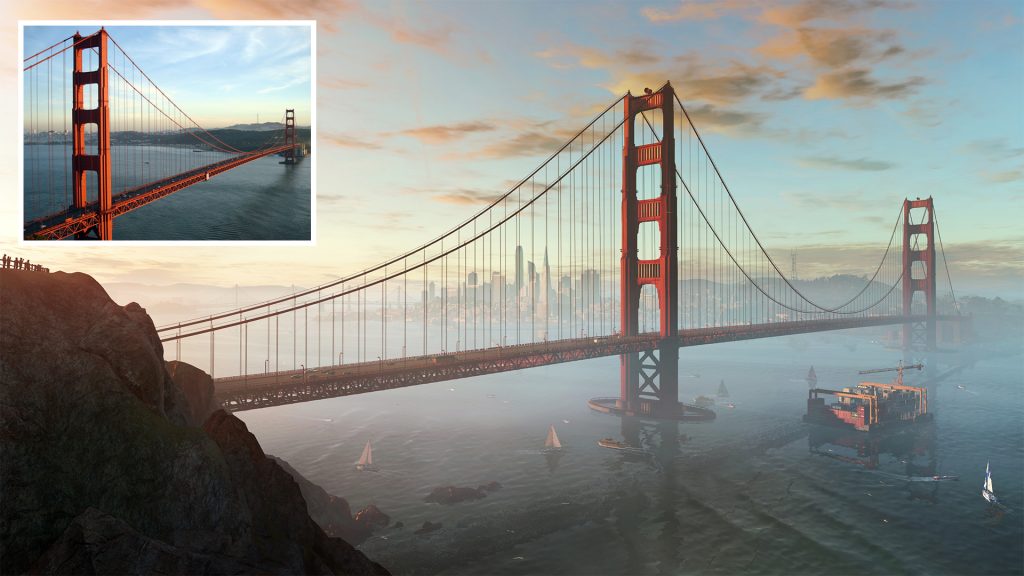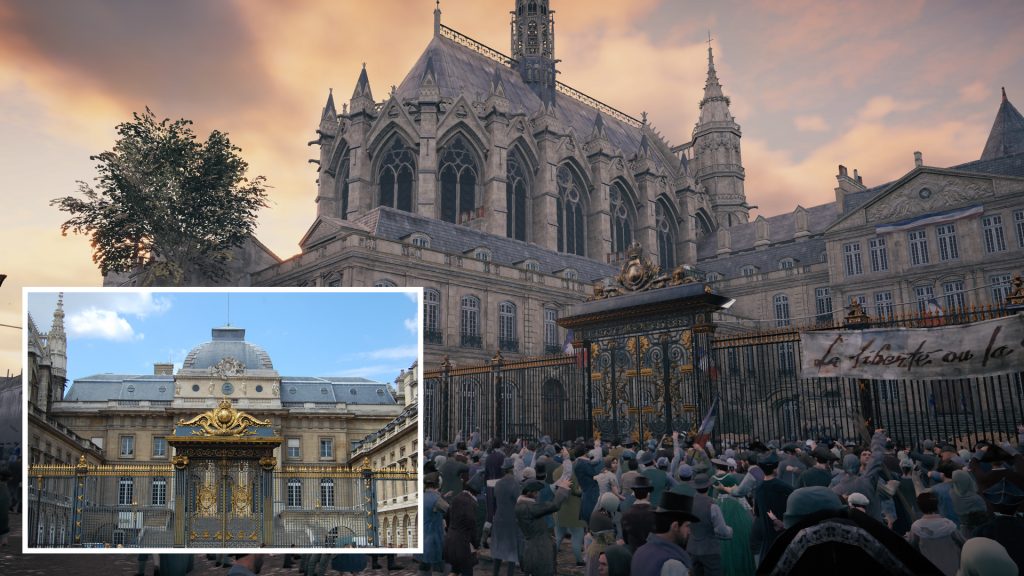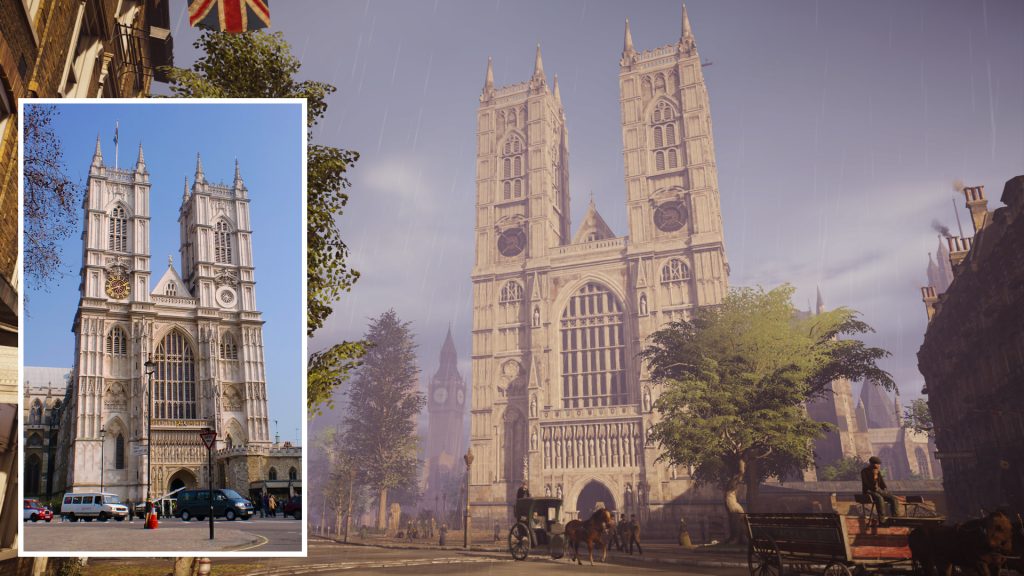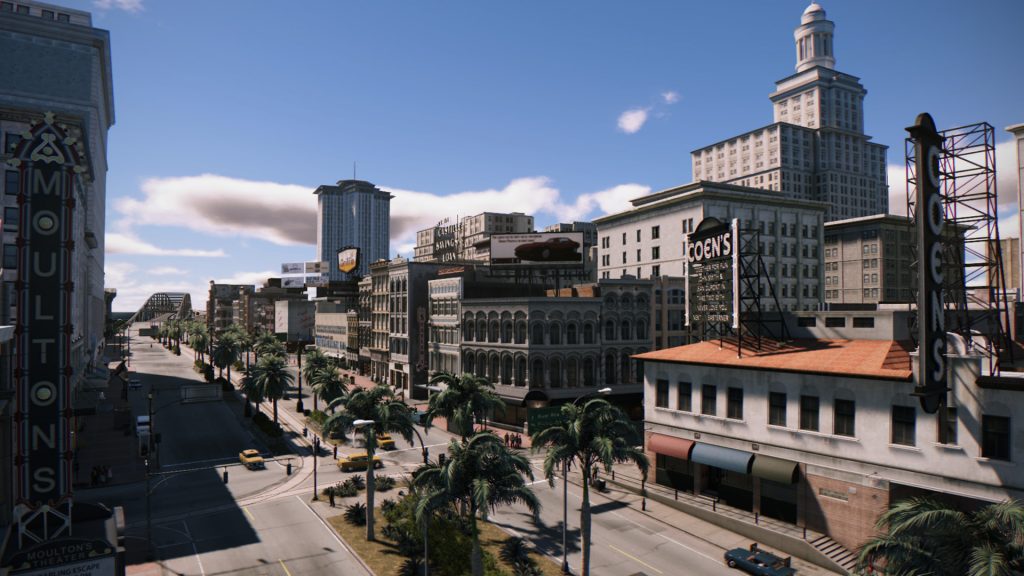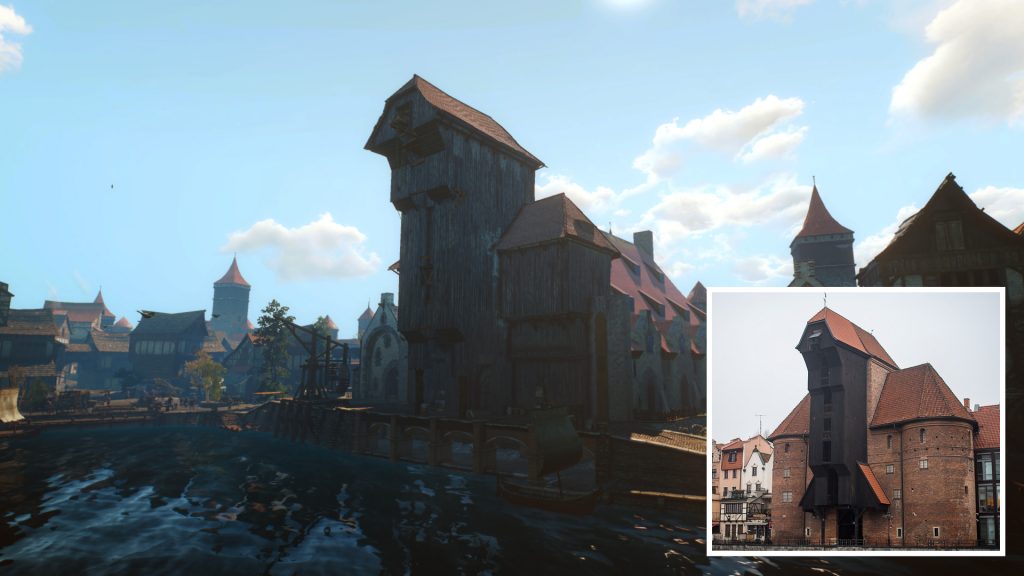
In many art forms, recreating something that already exists can often be more difficult than building something new. This is especially true when the source material is well-recognized, like a cult movie, a famous painting, or… a whole city.
The process of developing video games is a long, winding road, and in this article I want to focus on just one part of it, one that is usually limited to open-world titles. The question I’m going to address is, what happens when a studio chooses a real-life location as the setting for their video game?
The whole process usually starts with gathering as much reference material as possible. For example, while making Grand Theft Auto V, Rockstar had multiple teams visit California to take pictures and make sure that Los Santos was a faithful reinvention of Los Angeles. Even though it was supposed to be a humorous take on the real place, every detail still mattered, from lighting and ambience to capturing what people live in which neighbourhood. In the end, they had over 250,000 images and many hours of video to work with.
Another leader in the open-word genre, Ubisoft shares a similar approach. During its production of Watch Dogs 2, apart from photographing the streets of San Francisco, developers interviewed people who live there to discover their views on various areas and subcultures within the city. These opinions were later reflected in the game, in conversations you overhear while walking down the streets. One of Ubisoft’s many offices is actually located in San Francisco, so the company obviously wasted little time recreating the opportunity surrounding them.
When a game’s story is set in the past, things change a bit. In the case of the Assassin’s Creed series, the studio employs historians and experts to study books, old maps and encyclopaedias, and to research how a given time period was depicted in popular culture. The goal is to infuse the game with as much historical accuracy as possible, without infringing on its fictional story.
Its myriad problems and terrible optimization aside, Assassin’s Creed: Unity did get a few things right. Île de la Cité, an island in the middle of Paris and home to the famous Notre-Dame de Paris, has been adapted with incredible attention to detail and scale. Of course, 220 years ago the island looked a lot different, but even the preserved differences are accurate – such as the streets being narrower to reflect their former width or the presence of the graveyard behind the cathedral.
The series has had its ups and downs over the years, but each Assassin’s Creed title was impressive for how it depicted the world. The games are an interesting example of virtual historical tourism, be it when climbing Big Ben in 1868, sailing alongside Blackbeard on the Caribbean Sea, or sneaking through Paris during the French Revolution.
The level of detail in any game inspired by a real place largely depends on the scope of its world. In Tom Clancy’s The Division, the map only covers a portion of Manhattan, so the game designers had an opportunity to be a bit more accurate with the city’s layout. Watch Dogs 2 incorporated San Francisco, Oakland, Marin, and Silicon Valley, which meant that many areas had to be squished or completely removed. It can be tricky to decide which places should remain, and which should go – beyond major landmarks, there are often less popular locations that people who live there would consider key to the city’s experience.
That is not to say the current technology couldn’t replicate one giant city, even though optimizing such a game would certainly pose a challenge. I imagine that a bigger problem for developers would be making sure that all locations are distinctive enough, so players don’t get bored with roaming sameish-looking streets. That’s probably one of the reasons why in GTA V, the actual city covers only a quarter of the map.
There are also titles that deliberately aim for inaccuracy. Mafia III’s New Bordeaux is based on New Orleans, and even though the characteristic southern architecture and the atmosphere of the sixties are there, upon closer inspection you may find more differences than similarities. Previous instalments in the series were also set in fictional cities, only partially inspired by real ones. This allows the games to distance themselves from reality to an extent, regardless of the references to real-life events that are very often present in the story. Post-apocalyptic games like the Fallout series or The Last of Us tend to feature familiar cities as well, though in a much different form, often ruined, abandoned or overgrown.
Lastly, even games that play out in a fully fictional setting don’t shy away from using references to real life. The waterside tenement houses and the majestic harbour crane in Novigrad, a major city in The Witcher 3: Wild Hunt, were created with medieval Amsterdam and Gdańsk in mind.
Exploring real cities in video games can be a fascinating experience, especially if you’ve had a chance to visit them yourself and see how well they’ve been adapted. What are your favourite real-life locations like this, and what others would you’d like to see recreated?





